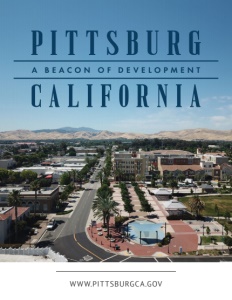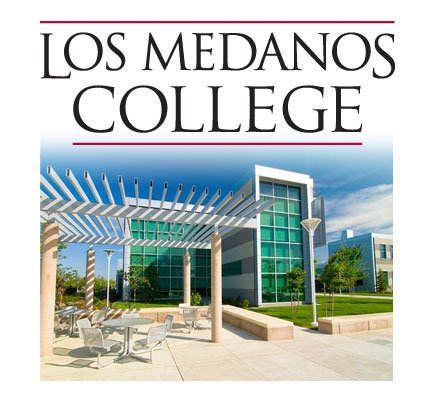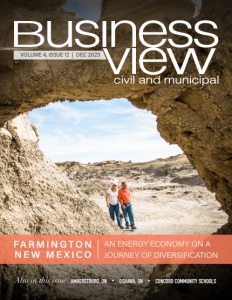Pittsburg, California
Proud of its past, excited about its future
Pittsburg’s economy continues to evolve
That’s Pittsburg – without an “h” at the end of its name. It was so-called officially in 1911, to honor Pittsburgh, Pennsylvania as both cities, though thousands of miles apart, shared a common heritage in industrial mining and steel manufacturing. But the story of this city located on the southern shore of the Suisun Bay, some 40 miles northeast of San Francisco in Contra Costa County, has a deeper history and more diverse heritage than just mining and industry — a history and a heritage that endures to this day and informs the city’s current administration’s vision for the city’s future.
Pittsburg was originally settled in 1839 when a land grant of almost 10,000 acres was issued to Jose Antonio Mesa and his brother Jose Miguel by the Governor of Mexican California, before the territory became a U.S. state. The area was known as Rancho Los Medanos, which translates as “inland sand dunes,” a reference to the topography that characterized its location between the Sacramento/San Joaquin River Delta, and the foothills of Mt. Diablo.
In 1849, during the California Gold Rush, a former New Yorker, Colonel Jonathan D. Stevenson, bought the ranch and laid out a town he called New York of the Pacific. It soon became a stopping point for schooners traveling from San Francisco to the gold county further inland. In 1859, coal was discovered in the nearby town of Nortonville, and with the building of the Black Diamond Coal Mining Railroad, New York became a port for the transportation of this new commodity. Steam-powered coal cars offloaded their bounty onto awaiting ships at the waterfront. By the late 1860s, the town began to be known as Black Diamond.
The coal boom ended by the early 1880s, but by that time, commercial fishing had already become a prominent industry in Black Diamond due largely to the talents of immigrant families from the Italian region of Sicily. The town boasted a network of fishermen, canneries, and boat builders that dominated the waterfront for the next 80 years, only ending in 1957, when the State of California banned commercial fishing in the Sacramento Delta.
The Rancho Los Medanos land grant was purchased again in 1900 by C.A. Hooper, a wealthy lumber baron, who saw in Black Diamond a perfect place to build a manufacturing plant to turn his raw wood into saleable product: there was plenty of open flat land on which to build, waterfront property that was sufficient for deep water lumber ships, available manpower for a workforce, and two transcontinental railroads that traversed the town, in which to move his wood products inland.
Hooper continued to develop his land with the addition of new industrial concerns – a rubber plant, brick works, a dairy, a flour mill — culminating with the establishment of the Columbia Steel Company, which opened its first foundry in 1910. He also brought in the area’s first electrical generation and transmission infrastructure, built homes for his workers, paved streets, and donated land for schools, parks, and churches.
In 1903 the town was incorporated, and by a vote of the citizenry, was officially named Black Diamond, after the mining firm. That name was finally replaced by Pittsburg (without the “h”) in 1911, as the steel industry became the city’s prime economic driver. Indeed, by the early 1950s, Columbia Steel, which became a subsidiary of U.S. Steel in 1930, was employing 5,200 workers. Another major employer in the city was the Dow Chemical Company, which established its operations in Pittsburg in 1939.
One last event that strongly impacted Pittsburg’s history and heritage came about in 1942, with the opening of Camp Stoneman, a U.S. Army facility that served as a major troop staging area for soldiers deploying to the Far East during both World War II and the Korean conflict. While the camp was decommissioned in 1954, the city’s ethnic and demographic diversity broadened as retiring service members with different backgrounds and from different places in the U.S. chose to make Pittsburg their permanent home.
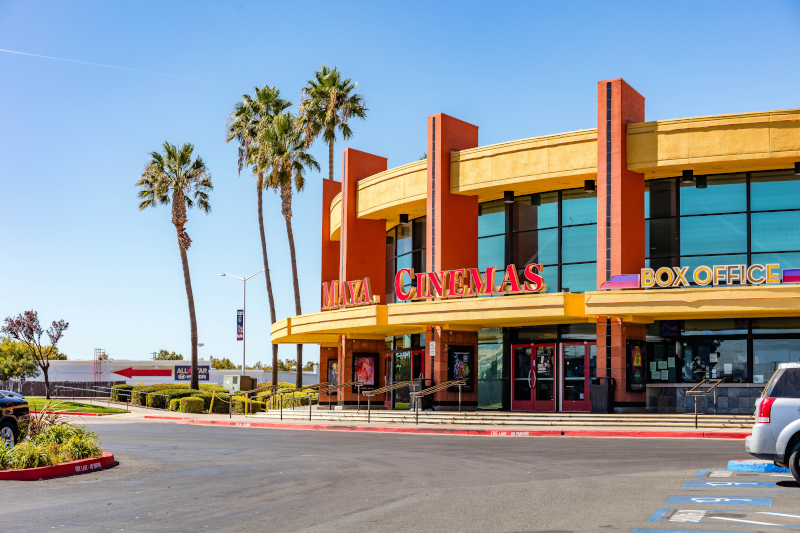 A city in transition
A city in transition
Today, Pittsburg is a vibrant and growing community of 77,000 that is, once again, facing a period of profound change. U.S. Steel, which became USS-Posco in 1986, after a joint venture with a Korean Iron and Steel company, and then reverted back to sole U.S. Steel ownership in 2020, recently informed the city, as well as its nearly 700 skilled workers, that it will be shutting down its operations this December. Meanwhile, Dow Chemical, which created Corteva Agriscience in 2019, an independent company that was formerly the agricultural unit of DowDuPont, and which focuses on seeds and crop protection, is downsizing its operation in Pittsburg and leasing out its industrial land to other users.
“So, we’re at a point of transition, right now,” says Jordan Davis, Pittsburg’s Director of Community and Economic Development. “Both of those companies have been in the city for a hundred years. And while they’re both winding down, they both led to what we are today, which is a city leaning into its industrial past as we continue to grow with a lot more housing and lot more 21st century service-oriented jobs.”
Economic Development Manager, Robert Carrera, agrees that the loss of its two major legacy industries, while challenging, actually opens the way for Pittsburg’s renewal. “While they’ve had extensive history here, we’re seeing a shift that presents a lot of great opportunities to reinvest in that area of town and retain it as an industrial center and employment hub,” he says. “What exactly it’s going to look like is not set in stone, but I’m very excited in seeing how the 21st century industrial jobs are going to form.”
Currently, there are still some important industrial occupants in Pittsburg with the potential of others to come. “Right now, we have K2 Pure Solutions, which provides chlorine products to local businesses,” notes Davis. “A prospective company is Endress+Hauser, which will also be producing bleach products. And, we’re currently processing an application for a company called H Cycle to produce clean hydrogen fuel, which will also potentially support some of the bus fleets in the region.”
Other local companies, which are important employers in Pittsburg, include Praxair Linde, which provides industrial gasses to a lot of businesses in the region; Bishop Wisecarver, which works with manufacturers to engineer, produce, and build custom complex assemblies, linear motion solutions, and optimal embedded intelligence systems; and Ramar Foods, the largest Filipino food manufacturer west of the Mississippi. Also in Pittsburg is Los Medanos Community College, which offers 35 associate degrees and 23 certificates of achievement to almost 9,000 students.
Attracting new business
Pittsburg has many attractive characteristics that both Carrera and Davis believe will help it attract other new industries and employers: it’s close to the major economic centers of the Bay area, it has two Class 1 railroads going right through it, it has land available for new housing, and it has a healthy reserve fund balance with over $6 million dedicated towards infrastructure projects and roadways.
Regarding housing, Davis says that the city is on target to build 8,000 additional housing units over the next 20 years. “We have room to grow and we have great development partners,” he states. “We’re seeing that growth in housing,” adds Carrera. “And you’re not seeing that in many area cities unless you go further eastward from the San Francisco area. So, more affordable houses are being built here. That increases our housing stock in an area where it’s much needed and it makes our community more desirable.”
Infrastructure improvements and amenities
Regarding its infrastructure, Davis says that over the last year, there’s been a significant reinvestment in the city’s water and sewer networks. “We recently went out for a bond for about $50 million to improve our water service,” he reports. “We had some areas that we identified as possible points of failure and we’re fixing those before actually experiencing the failures. Our water treatment plant serves about 15 million gallons per day. When this upgrade is completed, we will be able to serve about 32 million gallons per day. That’s a massive project that we’re undertaking. And we currently work with Delta Diablo, which is a joint powers authority that provides us wastewater treatment services, to expand our recycled water service throughout the area. That’s constantly being upgraded by Delta Diablo with assistance from the city.”
The City of Pittsburg also operates its own municipal electric and natural gas utility, the Pittsburg Power Company. “And we’re actively working on expanding that,” says Davis, “especially as demand for energy from high-energy users who continue to locate in our industrial areas grows. We’re looking for opportunities to provide them less expensive and reliable power, especially for those in the area of green energy production.”
Finally, California law allows municipalities to establish enhanced infrastructure financing districts (EIFDs). “What it does is provide cities an opportunity to earmark a certain portion of tax increment financing to fund infrastructure projects,” Davis explains. “So, we’re currently in the process of forming that district, which is going to go a long way in enhancing water, sewer, and other utility infrastructure in the city.”
Past administrations laid the groundwork
Davis, who has been at his post for nine years, gives a lot of credit to previous city administrations for planning Pittsburg’s future growth and development. “One of the things that’s been really exciting over the past one or two years is to see all the groundwork that was laid over the past decade and before that, really start to come to life,” he says. “For example, we were one of the first cities in the area to adopt a regional TOD (transit-oriented development) program, the Railroad Specific Plan, which was done over a decade ago to attract a new BART (Bay Area Rapid Transit) station.”
The Specific Plan area encompasses a half-mile radius around the station, which is located at the intersection of Railroad Avenue and State Route 4 in the center of town. It articulated the community’s vision for the area while embracing concepts of transit accessibility, pedestrian-friendly design, and high-quality development. “As part of that plan, we laid the groundwork for thousands of housing units around the station, additional job opportunities, and adjacent industrial parks,” Davis shares. “And now, we’re starting to see that come to fruition; we’re seeing five- and six-story transit-oriented development, and mixed-use development that is walkable to public transit.”
One of the new projects in the plan area is The Atchison, a $40 million development with over 200 affordable housing units and approximately 13,000 square feet of ground floor commercial and retail space that opened this past summer. Located less than a half mile from the BART station, it was partially funded under the federal government’s Low Income Housing Tax Credit (LIHTC) program.
Old Downtown and beyond
Pittsburg’s historic downtown is also booming. “Nine years ago, vacancies outnumbered occupied spaces in the downtown area,” Davis recounts. “Now it’s the complete opposite. Except for one large area that we’re still working on, almost everything has been occupied. Our vacancy level has dropped immensely and the amount of activity in that area has grown exponentially. So, it’s really exciting to see some of those things that we were so patient about, and worked so hard for, starting to come to fruition.”
Other new projects in Pittsburg include two new hotels, a new office building, and a 100-acre technology park. “That will include data centers and that’s going to really ramp up our ability to attract users that need high-speed internet access and proximity to data centers to reduce latency,” Davis notes. “We just opened a new park, and we’ve got a 45,000-sq.-ft. basketball facility under way. Our city council is continually providing additional funds for road maintenance, both from Measure M, which is our half-cent sales tax, but also from our general fund reserves. So, we’re starting to plan for additional roadway opportunities, including a possibility for a new off ramp to help us deal with some of the traffic issues that we’re experiencing.”
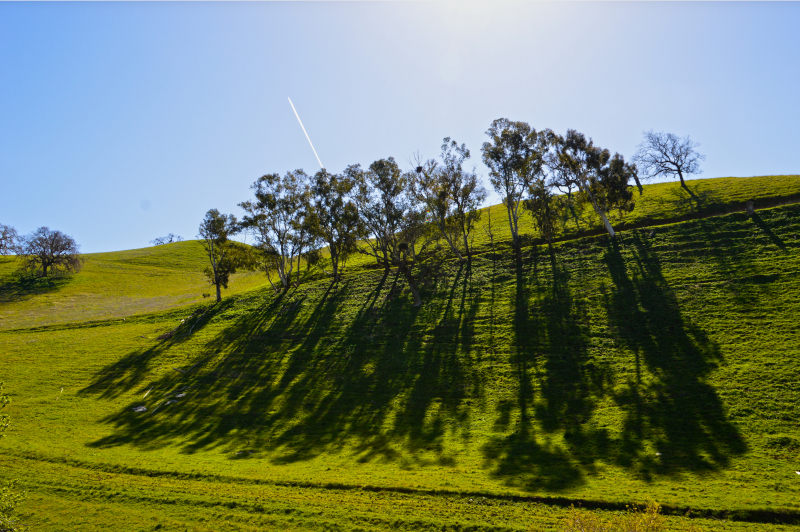 Sustainability and development
Sustainability and development
Recently, Pittsburg adopted its first Sustainability Plan, which outlines how the city is going to work on improving its air quality over the next few decades, while also being careful not to set too strict guidelines that might deter certain types of businesses from opening up shop there. “We want to be realistic and development-friendly,” Davis avers. “So, we’re walking that line between improving the quality of life for our residents, but also not setting additional hurdles for businesses and industry that want to locate in Pittsburg.”
That being said, Davis says that the city is completely supportive of California’s strict environmental laws and regulations and looks for any opportunity it can to reduce greenhouse gas emissions. “One project that we’ve done is Calpine Energy’s carbon capture project at the Los Medanos Energy Center, which is a 500-megawatt gas-fired power plant located here in the city,” he says. The $25 million project is testing a technology that could capture 95% of a power plant’s carbon emissions, a process California officials say is critical to the state’s climate fight. Calpine will use a chemical solvent to bind with the carbon dioxide in the plant’s flue gas, a process that purports to be more effective and cheaper than previous carbon capture technologies. “We’re seeing a lot of interesting projects,” Carrera adds. “Calpine is doing carbon sequestration and we’re getting a lot of interest in hydrogen power in our area, and that’s very exciting.”
The future of retail
Going forward, Carrera says that he wants to see the industrial areas along Pittsburg’s historic waterfront updated to be more attractive to prospective employers. He also wants to re-imagine what the city’s retail centers will look like and how they will be repurposed to meet the challenges of a changing retail environment. “A lot of our retail buildings were built 30 years ago and the scope of retail has changed, especially during the pandemic, which just accelerated its decline,” he states. “We’re seeing the shift in what people desire in terms of a retail product. They want more retail locations that are destination-based, where they can spend hours and have a lot more variety and amenities. So, we’re working closely with our partners here to help envision what desirable retail spaces we would like. We just hired a consultant called Retail Strategies to help us with marketing our city and to attract those future retailers. We feel it’s important, as our population grows, that we are able to provide the retail and amenities that they desire.”
Community is key
Davis wants people to know that Pittsburg is still a diverse, welcoming, and close-knit community. “As we’ve continued to grow, the folks that have been here for generations have maintained that feel. When you come to our wonderful events, our car shows, our holiday parades, our Seafood and Music festival located in John Buckley Square in Historic Old Town Pittsburg; when you go to some of the businesses here in town, it’s readily apparent. And while we’re pro-development, and we’re proud of our growth, we’ve got a lot of people who continue to preach community – that’s everybody from our city council, to our county supervisor, to folks who have grown up here. They want to bring people in. Pittsburg is about bringing people together. The Pittsburg way is to lift each other up, and support each other to the greatest extent possible. We’ve kept that motto and used it as one of our guiding principles for a long time.”
History and heritage – over the years, it’s been the lifeblood of Pittsburg, California, the city without an “h” at the end of its name.
AT A GLANCE
Pittsburg, California
WHAT: A city of approximately 70,000
WHERE: On Suisun Bay in Contra Costa County
WEBSITE: www.pittsburgca.gov
PREFERRED VENDORS
Mt. Diablo Resource Recovery – https://mdrr.com/
Honored to Be Part of the Pittsburg Community
With more than 360 employees, MDRR serves nearly 300,000 residents and thousands of businesses throughout Contra Costa and Solano Counties. Since its beginnings as a garbage company in the 1930s, MDRR has grown into a trusted, proven, and essential provider of trash, recycling, and organics collection and processing services. A long-standing business partner with the City of Pittsburg, MDRR has fulfilled the community’s waste removal needs since the 1970s. Key aspects of the company’s operations – including its cutting-edge recycling facility, innovative reuse program, and a high-performing customer service center – are also located within the city limits.
“Part of what makes MDRR unique is that we divert 90 percent of the material we collect away from the landfill,” says Director of External Affairs Sal Evola. “We know the City of Pittsburg shares our commitment to protecting the environment and we work hard every day to help keep this community pristine.”
MDRR offers additional services, such as debris box rentals and construction and demolition processing. Residents can also take advantage of one-stop-shopping when they offload bulky and hard-to-recycle items while sourcing products like compost and bark at MDRR’s recycling center at 1300 Loveridge Road.
Anchor QEA – jburnam@anchorqea.com

